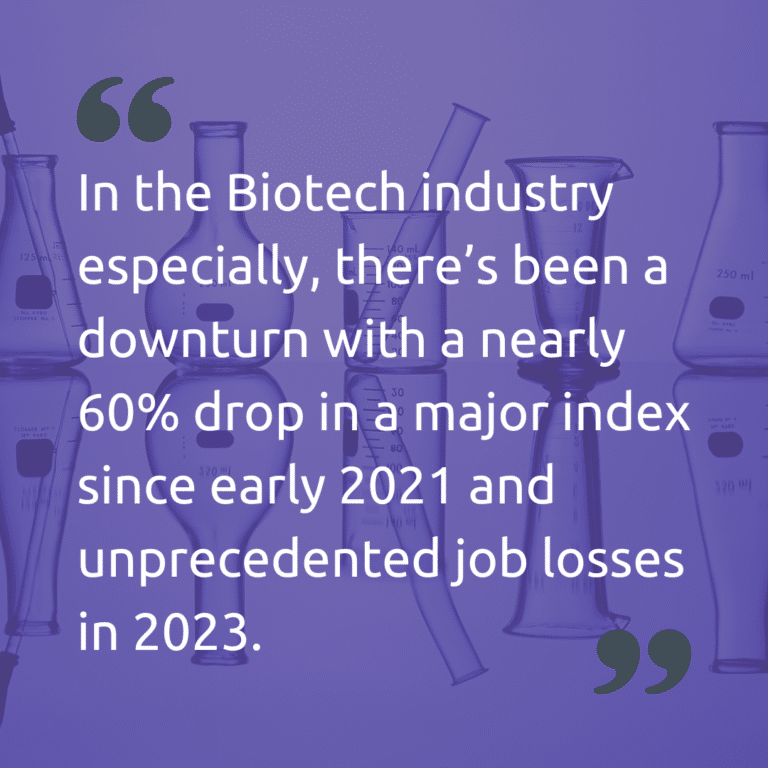The life science sector, encompassing biotechnology, pharmaceuticals, medical devices, and diagnostics, is experiencing significant growth and transformation. As medical treatments advance, investments increase, and real estate needs evolve, this expansion presents both opportunities and challenges. Here’s a look at the sector’s current state and future trajectory, with a focus on career development and hiring implications.
Current Growth and Expansion
The life science sector in Europe is poised for substantial expansion in 2024. According to JLL’s Life Sciences Industry & Real Estate Perspective report, new medical treatments, robust private and public funding, and increasing demand are key drivers of this growth. The number of newly formed life science companies in Europe has increased by 13.5% over the past five years, with big increases in Switzerland (+17%), the United Kingdom (+15%), and Germany (+15%). While company formation has slowed down, mergers and acquisitions and the need to renew drug pipelines due to patent cliffs are driving growth in the sector.
Real Estate and Investment Opportunities
The dynamic expansion of the life science sector is creating substantial demand for real estate. In key clusters like the ‘Golden Triangle’ of London, Cambridge, and Oxford, vacancies are low, so investors can build labs and manufacturing spaces to suit their needs. Paris, Berlin-Potsdam, and Barcelona are among the emerging clusters in Europe that are expected to attract a lot of investment. As a result of this growth, hiring managers have to compete for lab and office space, which can impact the speed and efficiency of setting up new businesses.

Challenges in the Job Market
The life sciences job market has faced a challenging period marked by significant layoffs and reduced hiring. In the biotech industry especially, there’s been a downturn, with a nearly 60% drop in a major index since early 2021 and unprecedented job losses in 2023. During the pandemic, overfunding of research, and investor caution led to funding cuts and hiring freezes. Both job seekers and employers across North America and Europe have been hit by career mobility stagnation and a saturated talent pool.
As a result of these challenges, life science companies are focusing on strategic resourcing and workforce stability. Maintaining a flexible workforce, investing in current employees, and developing talent are key strategies. To mitigate the impact of external hiring freezes, employers need to prioritize retention and internal growth. As a job seeker, it highlights the importance of adaptability and continuous professional development.
The potential for larger pharmaceutical companies to acquire smaller biotech firms with strong assets is expected to increase, though a skills gap due to reduced hiring and increased remote work remains a concern. Such M&A activities may increase job opportunities for job seekers with specialist skills.
Global Landscape of Biotechnology
Biotechnology’s growth landscape is uneven among countries, according to the OECD. In terms of the number of biotech companies and R&D investments, the United States remains a leader. Following closely is the UK, which has raised significant venture capital in recent years. Both Belgium and Switzerland have strong biotech sectors, thanks to high R&D intensity and favorable regulations.
As China shifts from generics to innovative drugs, supported by national policies and R&D investments, it’s emerging as a key player. With strategic clusters and government support, France’s biotech sector is growing, contributing to the global market’s expansion. These thriving markets offer great career opportunities for job seekers. Understanding these geographical trends can help hiring managers target the right talent pools and plan strategically.
Conclusion
Life science is growing, thanks to new medical treatments, investment opportunities, and strategic real estate developments. In spite of that, the sector faces challenges, especially when it comes to the job market and resourcing. Employers need to focus on workforce stability, innovation, and strategic investments to get through these challenges. To take advantage of new opportunities, job seekers need to stay adaptable and develop their skills constantly. Both employers and job seekers can thrive in the dynamic life science industry by understanding these trends.
To take a look at our current Life Science jobs, Click here.





